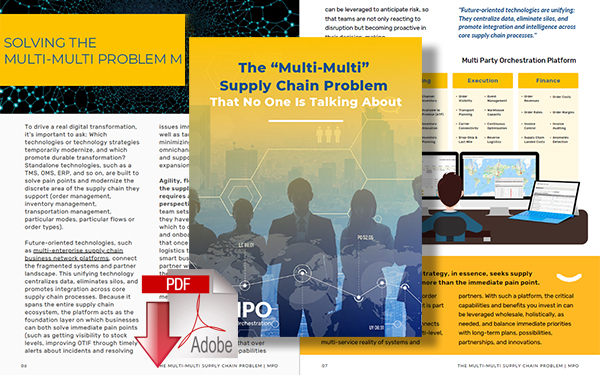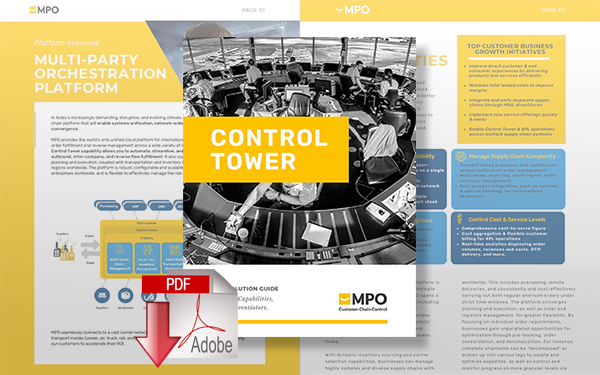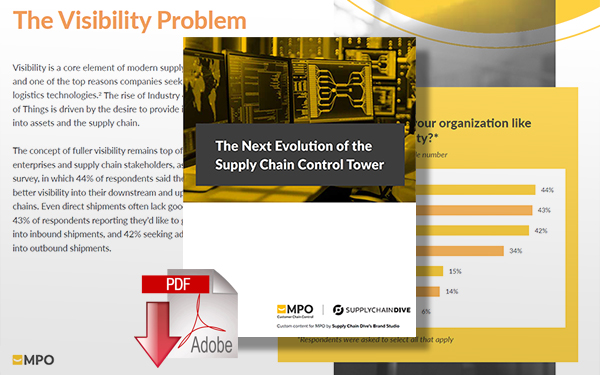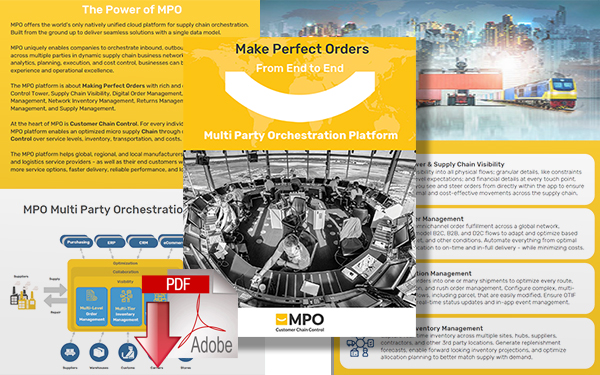What Is End-to-End Supply Chain Visibility?

Why are executives so concerned about supply chain visibility, the answer varies, depending on who you ask, their definition of “end-to-end visibility,” and the nature of their business.
How Much Supply Chain Visibility Do You Need?
Conventional thinking may have led some businesses to center their supply chain strategy around obtaining the most profitable cost, even when doing so meant assuming additional risk or lower-quality service.
A supply chain that’s optimized for price alone, however, doesn’t account for today’s market demands or the complexity that’s involved in multi-enterprise, multi-tier, multi-mode, and multi-direction order flows.
Within a network, there are potentially dozens of different touchpoints and stakeholders, all of which may have distinct systems and processes in place.
Without end-to-end supply chain visibility, information becomes siloed, creating unnecessary and corrosive segmentation.
The pandemic helped expose vulnerabilities in the global supply chain ecosystem, causing shortages across sectors, from medical supplies to automobiles.
The recent acceleration of supply disruptions made international headlines, but the trajectory that led us here started years before COVID-19.
According to survey information gathered by McKinsey & Company, “supply chain disruptions cost the average organization 45% of one year’s profits over the course of a decade,” historical context that helps demonstrate persistent challenges to supply chain planning and logistics. The same survey also showed almost 80% of respondents said they “need to improve and to invest in digital planning to increase supply chain visibility.”
Why are executives so concerned about supply chain visibility, specifically? The answer varies, depending on who you ask, their definition of “end-to-end visibility,” and the nature of their business.
Mitigate the Impacts of Supply Chain Disruption
A control tower with end-to-end visibility makes it possible to control costs while also planning for contingencies. With greater transparency between different tiers of the supply chain operation, partners can communicate with each other to leverage combined resources in pursuit of shared objectives. This might include, for example, expanding the network through multi-sourcing, which reduces the risk of supply shortage. Improved communication across parties can also be useful for exceptions management or responding to a customer’s status inquiry.
Download the White Paper: The “Multi-Multi” Supply Chain Problem That No One Is Talking About
In addition to streamlining collaboration and communication, a supply chain visibility solution also needs to be actionable. With in-app functionality built into the same platform that’s used for track-and-trace, changes to an order can be made during any leg of the order flow, allowing greater control and reaction speed. A system with all customer order data can apply cross-tier analytics and operational rules to support continuous optimization and risk mitigation, along with providing forecasting insight for stakeholders to inform decisions about stocking, carrier selection, SLAs, and other factors that affect market resilience.
Unify Disparate Legacy Systems & Processes
The number of merger filings submitted to the FTC between January and July of 2021 was 2,067, an “astounding” 138% increase compared with the same period in 2020, as reported by an executive from the FTC. For many organizations, M&A presents compelling growth opportunities, but it also comes with integration challenges.
At the beginning of a new partnership, the formerly separate entities must develop new standards in alignment with each other. To facilitate cohesion, information is exchanged. But it’s not easy to centralize all data - there may be transactional errors through duplicate product codes, for example, or differences in how metrics are documented and interpreted. These mistakes delay integration and create information silos.
Supply chain visibility software should seamlessly integrate with existing ERPs by standardizing and harmonizing data that is consumable and compatible for all parties. In addition to creating end-to-end visibility, control tower technology can also be used to capture granular and global detail views, so organizations can take a holistic approach to supply chain planning and execution.
Promote Market Competitiveness
A strategy that’s order-centric, rather than shipment-centric, is key to taking full advantage of partnerships within the supply chain network. Using a multi-level visibility and order management platform, businesses can isolate each order, then optimize it according to customer constraints and shared resources and capacities between network members. By managing orders individually instead of in batches, businesses can avoid unnecessary expeditions.
This type of flexibility can be especially lucrative for orders with specific operational or storage parameters, and in industries where service level expectations are high. Precise control and visibility at every touchpoint of the overall order flow also create opportunities for improvement.
With supply chain visibility software, businesses can evaluate and refine processes that could benefit by enhancing replicability and speed, for example, which could in turn promote market growth.
Get the Right Supply Chain Visibility Software Platform
Visibility into order flowsSupply chain management is multi-faceted; digital control towers help businesses account for these complexities and take advantage of the unique opportunities and value adds a robust and dynamic multi-party ecosystem offers. So how do you know whether your current capabilities are comprehensive and sufficient to meet your goals and standards? A good place to start is by filling out a visibility checklist. In an increasingly interconnected global economy, supply chain visibility software isn’t just a tool for cutting costs - it’s a means for mitigating risk, preserving your business, and leveraging partnerships.
Considering all that’s at stake, it’s vital to move away from manual processes that don’t reflect the variability in your supply chain or enable you to manage that complexity by intelligently automating processes. And for those who are further along in their digitization efforts, innovation and evolution require constantly auditing your technology strategy. For instance, does your visibility solution cover all modes and costs including parcel? How about reverse logistics? If not, a holistic and unified platform will enable you to extend supply chain visibility across the full order lifecycle – including returns – to optimize customer service levels, inventory, and transportation costs for each shipment.
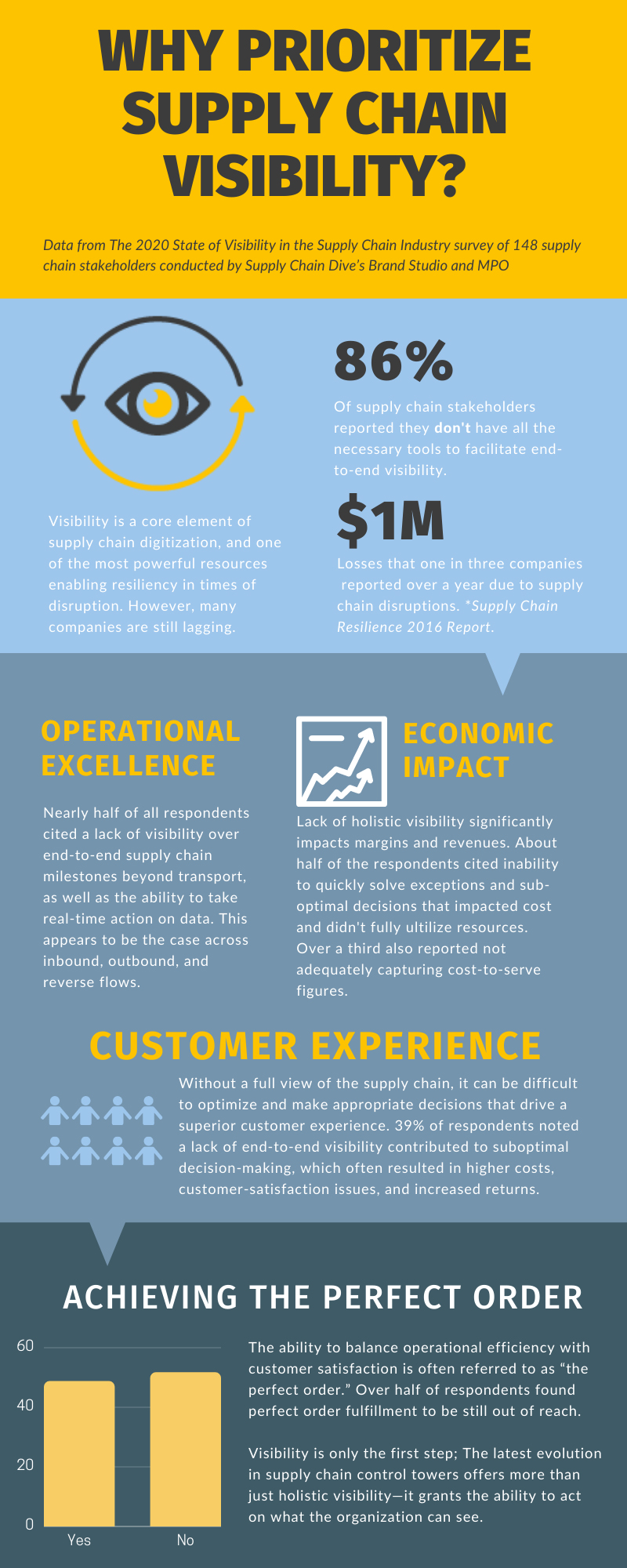
Looking for a robust end-to-end supply chain visibility solution? Supply Chain Visibility has significantly evolved from a buzzword in logistics circles that referred to track and trace capabilities to a more holistic solution that extends beyond transportation to cover all order flows and inventory across both in-house and third-party locations. Growing customer demands, supply chain complexity, and business networks are redefining what it takes to optimize supply chain management and consistently achieve high standards amid disruption and uncertainty. Download the guide below to learn more about what a next-gen supply chain visibility solution is capable of.
You can also get in touch by reaching out to [email protected], [email protected], or requesting a demo today.
Related 'Supply Chain Visibility' Resources
The “Multi-Multi” Supply Chain Problem That No One Is Talking About
In this white paper, we examine why the average organization is losing significant profits from supply chain disruptions and why we need to understand the deeper problem to change the outcome. Download Now!
Supply Chain Control Tower & Visibility
This Supply Chain Control Tower and Visibility solution guide provides a deeper look into the platform's capabilities and benefits, as well as a practical overview of why a unified and converged approach will make all the difference in running an efficient and cost-effective supply chain that drives superior customer satisfaction. Download Now!
The Next Evolution of the Supply Chain Control Tower
This white paper explores why visibility is a core element of modern supply chain digitization, and a top reason to implement logistics technologies in your supply chain. Download Now!
Multi-Party Orchestration Platform
In this brochure, you'll find a guide to MPO's unified cloud platform for multi-party orchestration, including its rich and flexible solutions: Control Tower, Supply Chain Visibility, Digital Order Management, Transportation Management, Network Inventory Management, Returns Management, Spare Parts Management, and Supply Management. Download Now!
More Resources from MPO
Related Article: 5 Critical Trends for Supply Chain Control Towers in 2022
Article Topics
MPO News & Resources
TMS+ Go Beyond Transport to Optimize Cost, Service, & Resiliency Multi-Party Orchestration Platform When It Comes to Digital Transformation You May Not Be Doing What You Think How Chief Operating Officers are Achieving Results with Supply Chain Software SPARK Matrix Transportation Management System Software Analyst Report Top Trends Driving Change and Technology Strategy Within Logistics & Transportation Management 5 Key Steps for Optimizing your Last Mile Delivery More MPOLatest in Supply Chain
How Much Extra Will Consumers Pay for Sustainable Packaging? FedEx Announces Plans to Shut Down Four Facilities U.S. Manufacturing is Growing but Employment Not Keeping Pace The Two Most Important Factors in Last-Mile Delivery Most Companies Unprepared For Supply Chain Emergency Microsoft Unveils New AI Innovations For Warehouses Let’s Spend Five Minutes Talking About ... Malaysia More Supply Chain

